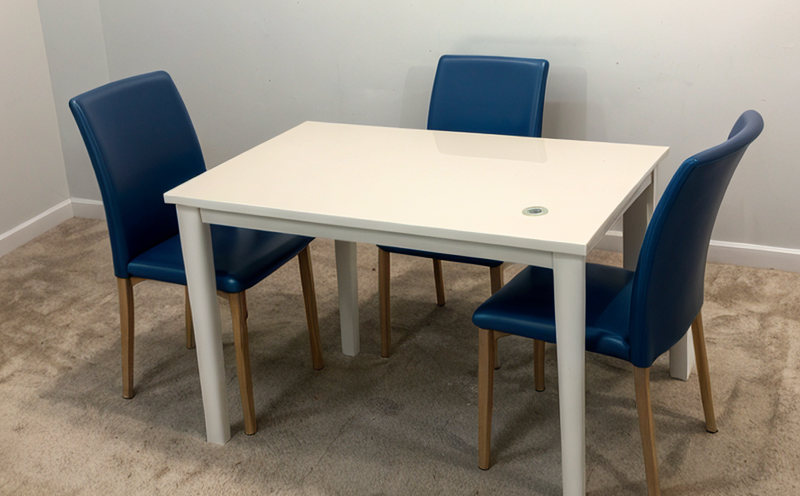ISO 22196 Antibacterial Activity Testing of Interior Plastic Surfaces
The ISO 22196 standard has become a critical tool for manufacturers and quality managers in the furniture and interior design sectors. This standard provides a method for assessing the antibacterial activity of surfaces, including plastics used in interior applications. By understanding the antibacterial properties of these materials, companies can ensure their products contribute to healthier environments while meeting regulatory requirements.
The ISO 22196 protocol involves exposing test specimens under controlled conditions and then measuring bacterial reduction over a specified time period. This testing is essential for ensuring that plastics used in furniture meet the stringent hygiene standards required by many industries, particularly those related to public spaces like office buildings or residential environments.
The test requires precise specimen preparation, which includes cutting uniform samples from the plastic material intended for use in furniture manufacturing. These specimens are then exposed to a standardized bacterial challenge designed to simulate real-world conditions. The results of this exposure provide valuable data on the antibacterial efficacy of the material, allowing manufacturers to make informed decisions about product design and improvement.
One of the key aspects of ISO 22196 is its focus on ensuring that any antibacterial claims made by manufacturers are backed by scientific evidence. This standardization helps build consumer confidence in products marketed as hygienic or antimicrobial, which can be a significant factor in marketing and sales.
In addition to the core testing process outlined in ISO 22196, there are several factors that contribute to its effectiveness. These include the use of appropriate bacterial strains, control over environmental variables such as temperature and humidity, and rigorous adherence to sample handling protocols. The accuracy of these procedures ensures reliable test results.
The testing process also involves detailed documentation and reporting. Laboratories following ISO 22196 must document every aspect of the specimen preparation, exposure conditions, bacterial challenge, and subsequent measurement of microbial reduction. This comprehensive approach not only enhances the reliability of the test but also provides valuable insights into how different factors might influence antibacterial performance.
Test Specimen Preparation
- Cut uniform samples from the plastic material intended for use in furniture manufacturing.
- Ensure that each specimen is of a standard size and shape to allow for consistent testing conditions.
- Label specimens with unique identifiers to track individual results throughout the testing process.
Bacterial Challenge
- Select appropriate bacterial strains that are commonly found in indoor environments.
- Prepare a standardized challenge inoculum at specific concentrations and apply it uniformly across all specimens.
- Ensure that the exposure period is consistent for all samples to allow fair comparison of results.
Customer Impact and Satisfaction
The implementation of ISO 22196 testing has a direct positive impact on customer satisfaction by ensuring that products meet or exceed hygiene standards. By demonstrating commitment to quality, companies can build stronger relationships with their customers. Moreover, the transparency associated with this testing process allows for open communication about product performance.
- Enhanced trust in product claims about antibacterial properties.
- Increased customer loyalty due to perceived higher quality and safety.
- Better alignment between product specifications and actual performance, leading to more satisfied customers.
Environmental and Sustainability Contributions
Incorporating ISO 22196 testing into manufacturing processes can have significant environmental benefits. By ensuring that products are effective at reducing bacterial contamination, manufacturers contribute to cleaner indoor environments, which is crucial for public health.
- Reduction in the spread of bacteria within homes and offices.
- Potential decrease in healthcare costs associated with infectious diseases.
- Increased demand for hygienic products can drive innovation towards more sustainable materials.
Competitive Advantage and Market Impact
Adopting ISO 22196 testing not only meets regulatory requirements but also provides a competitive edge in the market. By offering products that are scientifically proven to be effective against bacteria, manufacturers can differentiate themselves from competitors. This differentiation is particularly important in sectors like furniture and interior design, where hygiene concerns are increasingly prominent.
The market impact of such testing is significant as it sets higher standards for product quality, leading to increased demand for these products. This trend not only benefits individual companies but also contributes positively to overall industry growth.





